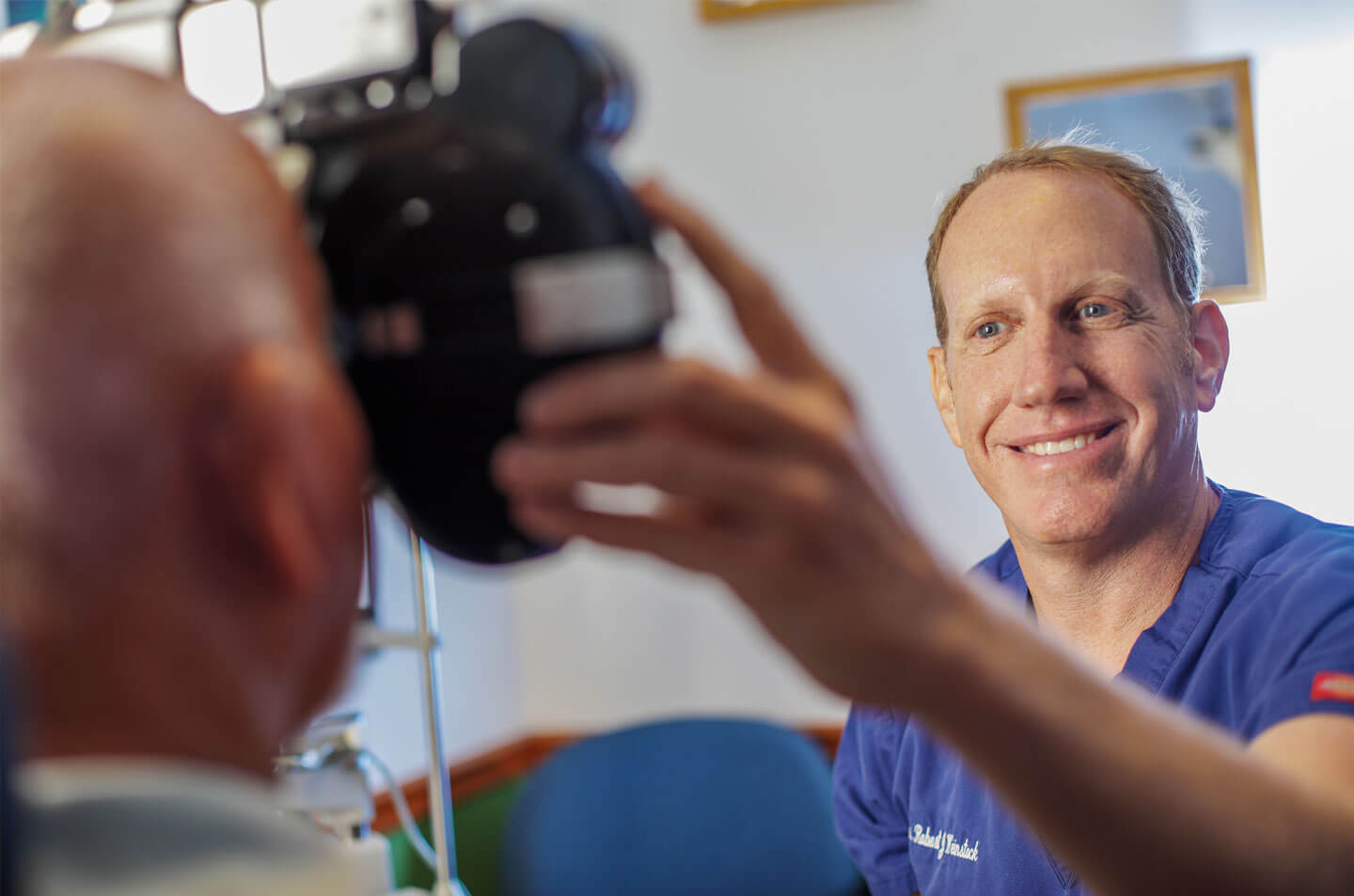Frequently Asked Questions
Our team loves the opportunity to answer all your questions on the phone; but if you prefer to learn more before talking with us, here are the most frequently asked questions by patients considering LASIK.
You must be at least 18 years of age, in good general health, with a stable refraction for 2 years. A screening with one of our physicians is the best way to determine if you are a LASIK candidate and what your probable outcome may be.
Candidates should be free of any eye diseases including keratoconus, eye viruses including herpes simplex, and herpes zoster, as well as certain health problems, including uncontrolled diabetes, autoimmune, or collagen vascular disease.
Our physicians will want to be aware of other eye problems including: amblyopia (lazy eye), strabismus (muscle imbalance), severe dry eyes, previous eye surgery or injury, and any recurrent, residual or active eye conditions which may affect healing such as keloid scarring. Patients should make our physicians aware of back problems, claustrophobia or other psychological problems, which may affect the surgery or recovery.
Usually, both eyes are done on the same day. Since a patient can resume most of their normal activities within 24 hours, most elect to have both eyes done on the same day for convenience.
Correcting vision with the laser takes only seconds. The procedure itself takes about 7 minutes for both eyes. You will be at our office for about 1-1 1/2 hours on the day of the procedure to ensure that you are relaxed, that all of your questions have been answered, and to allow you the opportunity to observe the procedure. We find that knowing exactly what to expect creates the most relaxed patient.
Patients are checked the day following their procedure. Most patients may return to work and resume most normal activities within 24 hours.
LASIK is a very safe procedure in the right hands. The most significant risk is infection, which is reported in 1 in 5,000 cases; whereas 1 in 500 contact lens wearers suffer from infections and corneal scarring. One way for patients to further lessen the risk is to follow pre-operative and post-operative instructions carefully. Antibiotic eye drops are used after the procedure to minimize this risk.
Vision correction results vary based on the experience of the physician and the equipment being used. You should only trust your eyes to an experienced surgeon.
LASIK is often referred to as a "painless" procedure. There is virtually no discomfort because the patient receives numbing drops prior to the procedure. Once the drops' effect wears off, a patient's eyes may feel a bit irritated for a few hours. Some patients feel no irritation whatsoever.
A lid spectrum keeps your eyelids from blinking, and our doctors control your eye movements with an instrument they designed specifically for this purpose. This keeps your eye centered on the target, but if you sneeze or cough, the doctor removes his foot from the laser pedal and continues the treatment after he re-centers your eye.
To ensure your comfort and confidence, your head and neck are kept snug in an inflatable pillow, your lids are kept open with a speculum and your eyes are treated with numbing drops that prevent your eye from reacting to stimuli. Before each step, our doctors will indicate what you may see, hear or feel so you are not surprised.
LASIK correction is permanent. The eye may continue to change as a result of aging but these are only minor changes.
Most patients see better immediately upon sitting up. However, the vision is somewhat hazy due to all the drops and medication placed on the eye. This mild haziness usually clears after a short nap or the next morning.
Patients usually notice an immediate improvement in their vision after LASIK. However, it can take several weeks for the eyes to adjust to the final level of correction. Vision may fluctuate for a week or so. There may be some watering of the eyes, and a slight feeling of a foreign body sensation. After having LASIK the great majority of patients do not wear corrective lenses of any kind. However, because our eyes can continue to change with age, there may be a need for additional vision correction (surgery or glasses) in the future.
Photo Refractive Keratectomy, or PRK, reshapes the cornea beginning with the surface of the cornea. LASIK, first creates a thin corneal flap and then reshapes the underlying cornea after which the flap is replaced. For this reason, with LASIK there is less area to heal, less risk of scarring, less risk of corneal haze, less postoperative pain, less postoperative need for medications and vision returns more rapidly.




